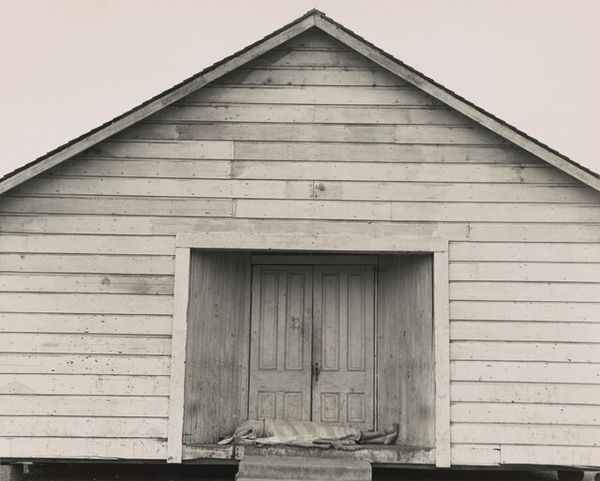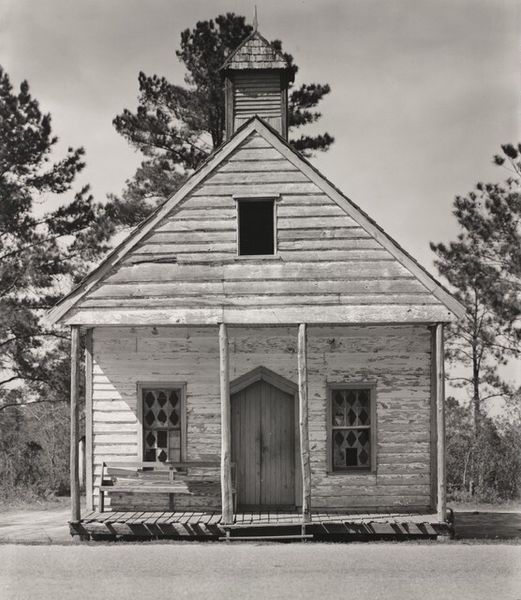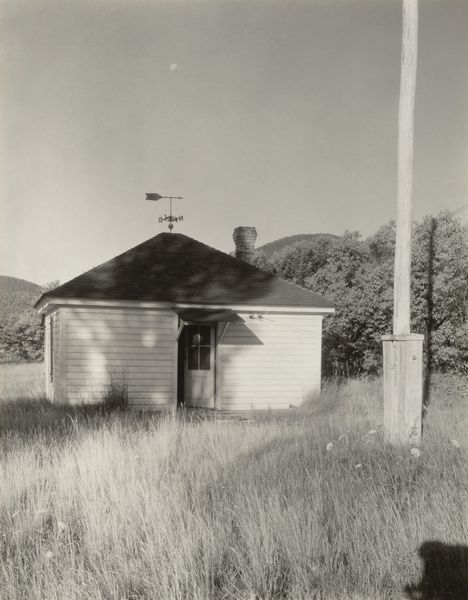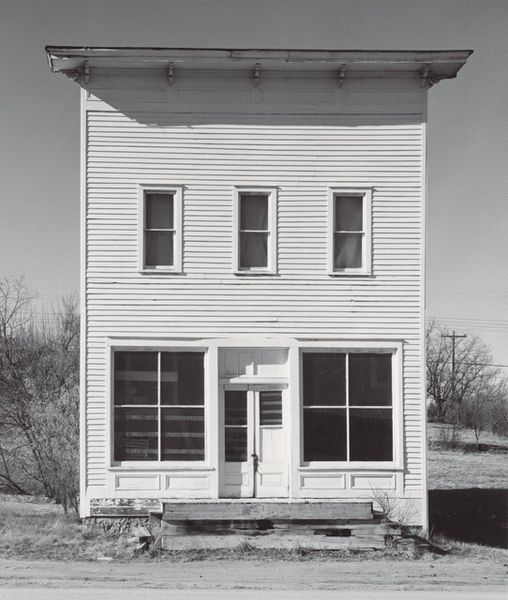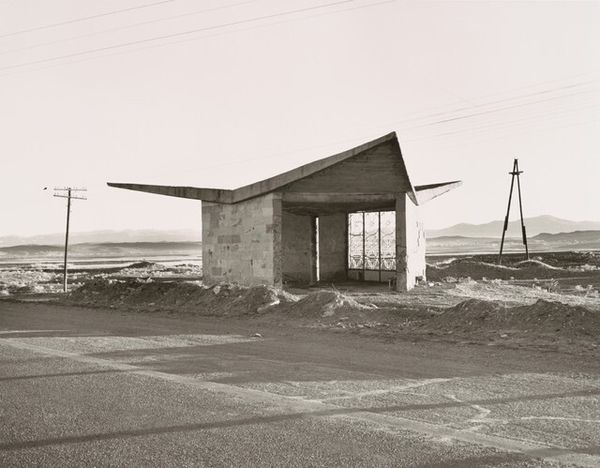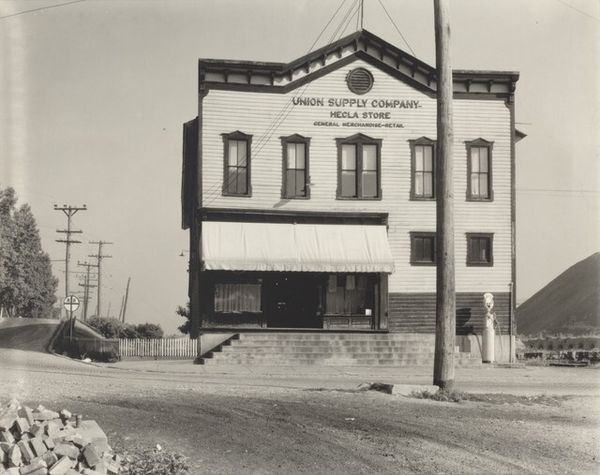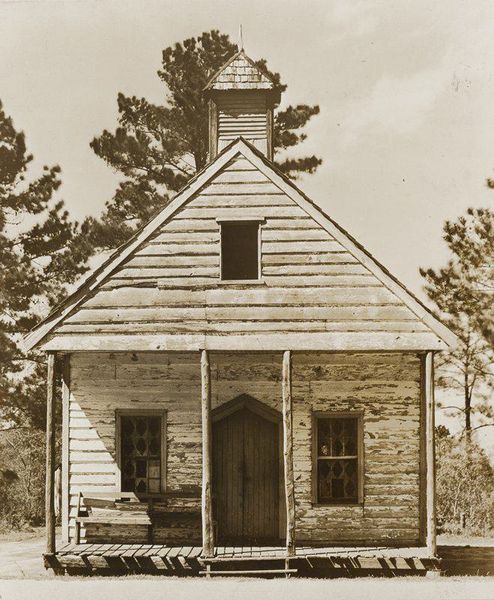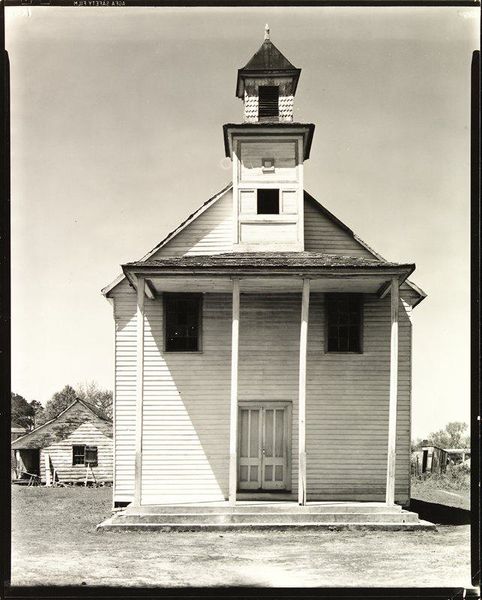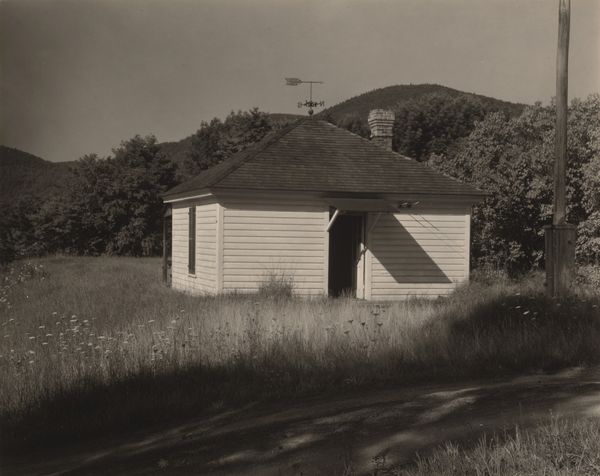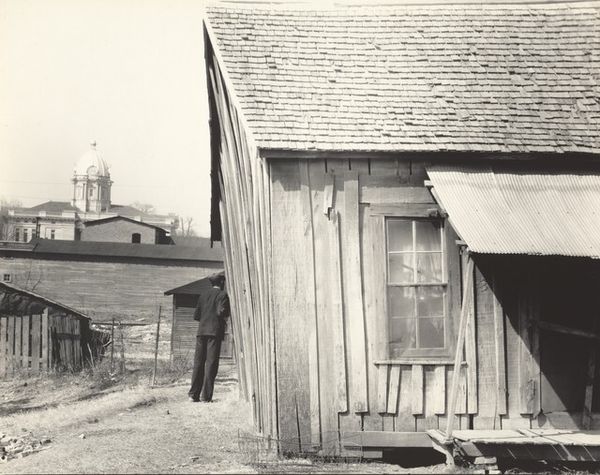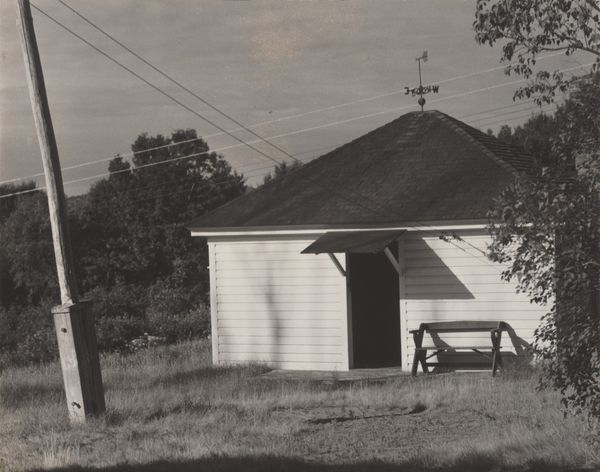
Church in shacktown community. It is used by different sects, including Pentecostal. The curtains are made of flour sacks, near Modesto, Stanislaus County, California 10 - 1940
0:00
0:00
photography
#
black and white photography
#
landscape
#
rural
#
black and white format
#
street-photography
#
photography
#
black and white
#
monochrome photography
Dimensions: image: 19 × 24 cm (7 1/2 × 9 7/16 in.) sheet: 20.1 × 25.1 cm (7 15/16 × 9 7/8 in.)
Copyright: National Gallery of Art: CC0 1.0
Editor: This photograph, "Church in shacktown community..." taken in 1940 by Dorothea Lange, presents a simple church building. It feels stark, almost confrontational, because of its direct composition. What can you tell me about this image? Curator: Lange’s photograph is a powerful document of the Great Depression, capturing both the physical and spiritual landscape of displaced communities. Look closely—what do the flour sack curtains suggest to you about the lives of those attending this church? Editor: Poverty, definitely. They're repurposing whatever they can find. It shows resilience, but also… vulnerability. Curator: Exactly. And what about the sign, "Prophecy Tabernacle"? During times of immense hardship, religion often provides solace and a sense of control when all else feels uncertain. Lange's choice to center the building emphasizes how faith was a vital element for communities facing socioeconomic challenges and injustice. Editor: I see that now. It’s not just a picture of a building; it’s about the people who sought refuge within those walls. Were these kinds of churches common during this period? Curator: Yes, particularly within marginalized communities. They represented a space for self-expression, resistance, and community building, frequently providing mutual aid networks outside the view of the government or established charities. Does seeing this through that lens change your initial reading of the image? Editor: Absolutely. It adds layers of meaning – the church becomes a symbol of defiance against the hardships they were facing. Thanks, I appreciate how you placed this image within its larger socio-political context! Curator: My pleasure. Hopefully it encourages us to consider how seemingly simple images can be incredibly complex historical texts, informing contemporary issues of economic inequality and the role of faith.
Comments
No comments
Be the first to comment and join the conversation on the ultimate creative platform.
